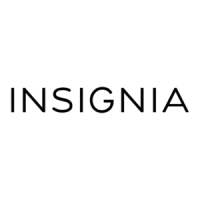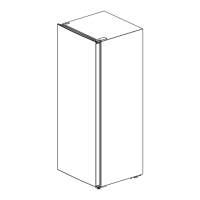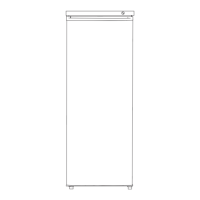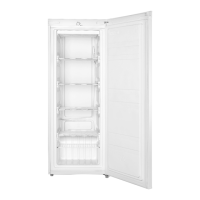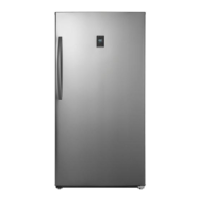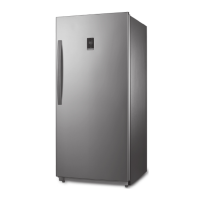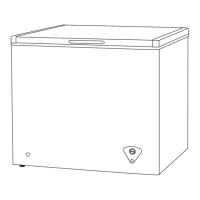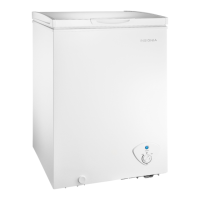www.insigniaproducts.com
15
7 Cu. Ft. Convertible Upright Freezer
Tips on saving energy
• Locate your freezer in the coolest area of the room, away from heat producing appliances or heating ducts and out of
direct sunlight.
• Let hot foods cool to room temperature before placing them in your freezer. Overloading your freezer forces the
compressor to run longer.
• Wrap foods correctly and wipe containers dry before placing them in your freezer. This cuts down on frost build-up
inside your freezer.
• Organize and label food to reduce door openings and extended searches.
• Do not use aluminum foil, wax paper, or paper toweling to line shelves. Liners interfere with cold air circulation and
make your freezer less efficient.
Tips on storing food
• Always store cooked meats on a freezer shelf above raw meats to avoid bacterial transfer. Keep raw meat on a plate
which is large enough to collect juices, and cover the plate with cling film or foil. Leave space around food. This allows
cold air to circulate around your freezer so that all parts of your freezer are kept cool.
• To prevent transfer of flavors and food drying out, wrap or cover each food item separately.
• Let hot food cool down before placing it in the freezer. Placing hot food in the freezer could spoil other food and lead to
higher temperatures.
• To prevent cold air from escaping, try to limit the number of times you open the doors. When retuning from shopping,
sort foods to be kept in the freezer before opening the door. Only open the door to put food in or take it out.
• Do not store food in your freezer which goes bad easily at low temperature, such as bananas and melons.
• When storing food in your freezer, use a container with a lid whenever possible. This prevents moisture from
evaporating, and helps food keep its taste and nutrients.
• When storing food in your freezer, wrap the food in polyethylene film, aluminum foil, or other types of freezer storage
products.
• Do not block air vents inside with food. Smooth circulation of cold air keeps freezer temperatures even.
• Do not open the door frequently. Opening the door lets warm air enter your freezer and can cause the temperature to
rise.
• To adjust the temperature control easily, do not store food near the temperature controls.
• Do not store bottles in your freezer. They may break when frozen.
• Do not refreeze food that has been thawed. This causes a loss of taste and nutrition.
• Leave a small amount of “air space” when freezing liquids to allow for expansion.
• To make the best use of freezer space, freeze liquids (or solids with liquids, such as stew) in square blocks. Pour the
liquid into a freezer bag placed inside a square-sided container and freeze it. When the liquid is frozen, remove the bag
from the container and seal the bag.
Tips for shopping for frozen foods
• When you are buying frozen food, look at the storage guidelines on the packaging. Check the “Best Before” date. Do
not use food that is past this date.
• Check the temperature of the frozen food cabinet in the shop where you buy your frozen foods.
• Make sure that the frozen food package is in perfect condition.
• Always buy frozen products last to avoid thawing while you shop.
• Keep frozen food together while shopping, and on the journey home to help to keep the food cooler.
• Don't buy frozen food unless you can freeze it quickly.
• When transporting frozen food, use special insulated bags that you can buy from most supermarkets and hardware
shops. These keep frozen food cold longer.
• Freeze food in small quantities. It freezes faster and takes less time to thaw.
• If you are freezing large amounts of fresh food, select a low temperature range. This will lower the temperature in the
freezer so your food freezes faster. When the food is frozen, adjust the temperature back to its normal mode.
Tips on defrosting
• For better performance, your freezer should be defrosted when the frost inside exceeds 1/4 in. thick.
• Your freezer should be defrosted prior to converting from Freezer mode to Refrigerator mode.
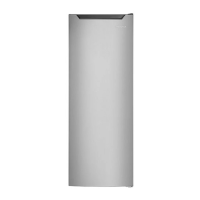
